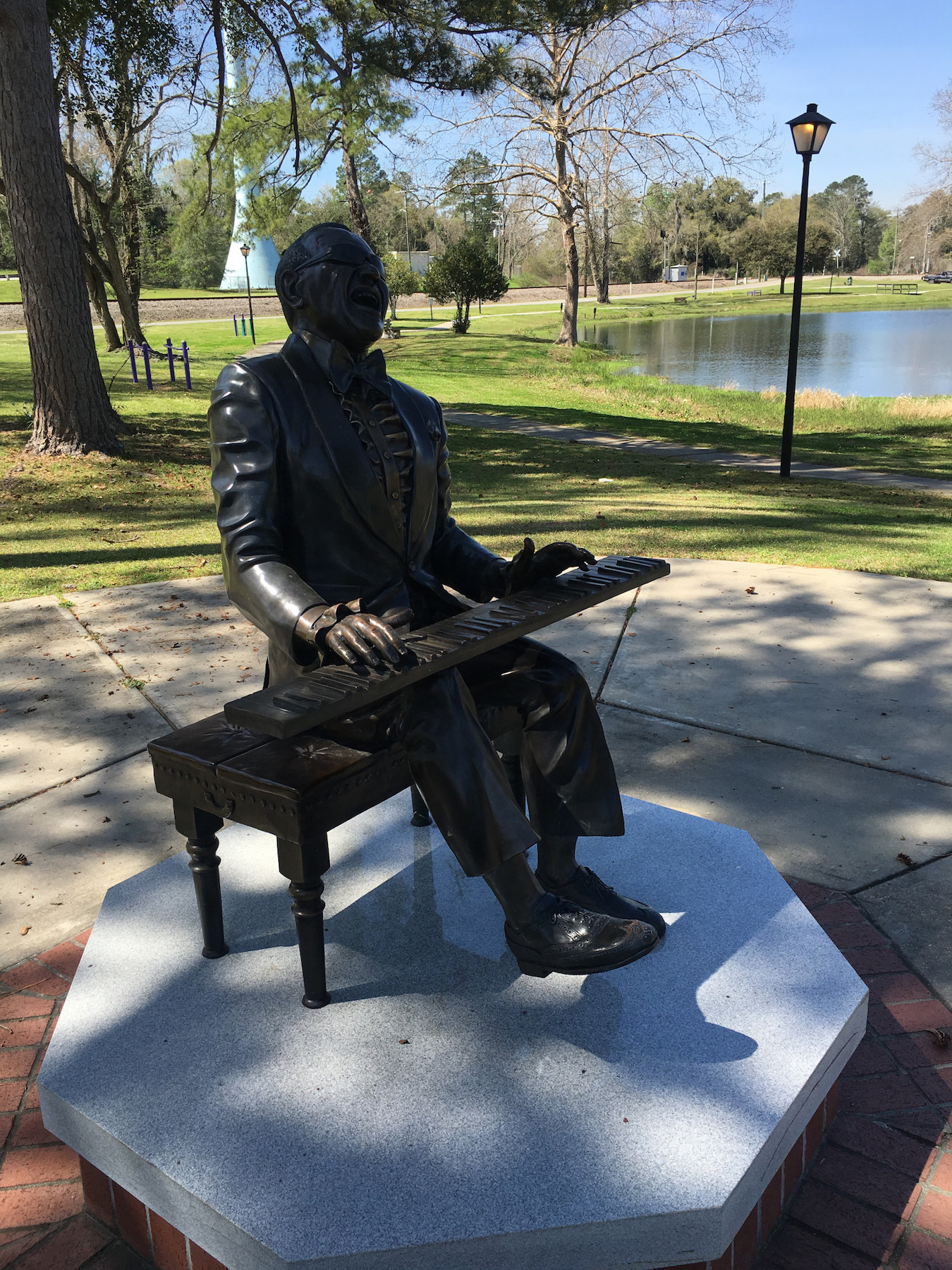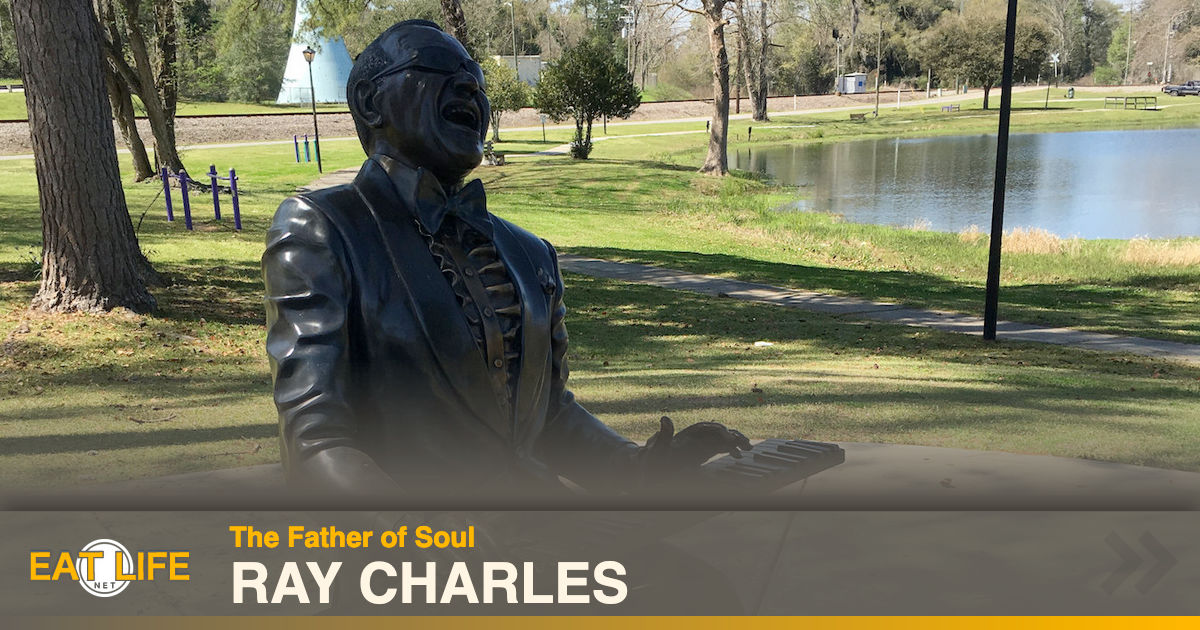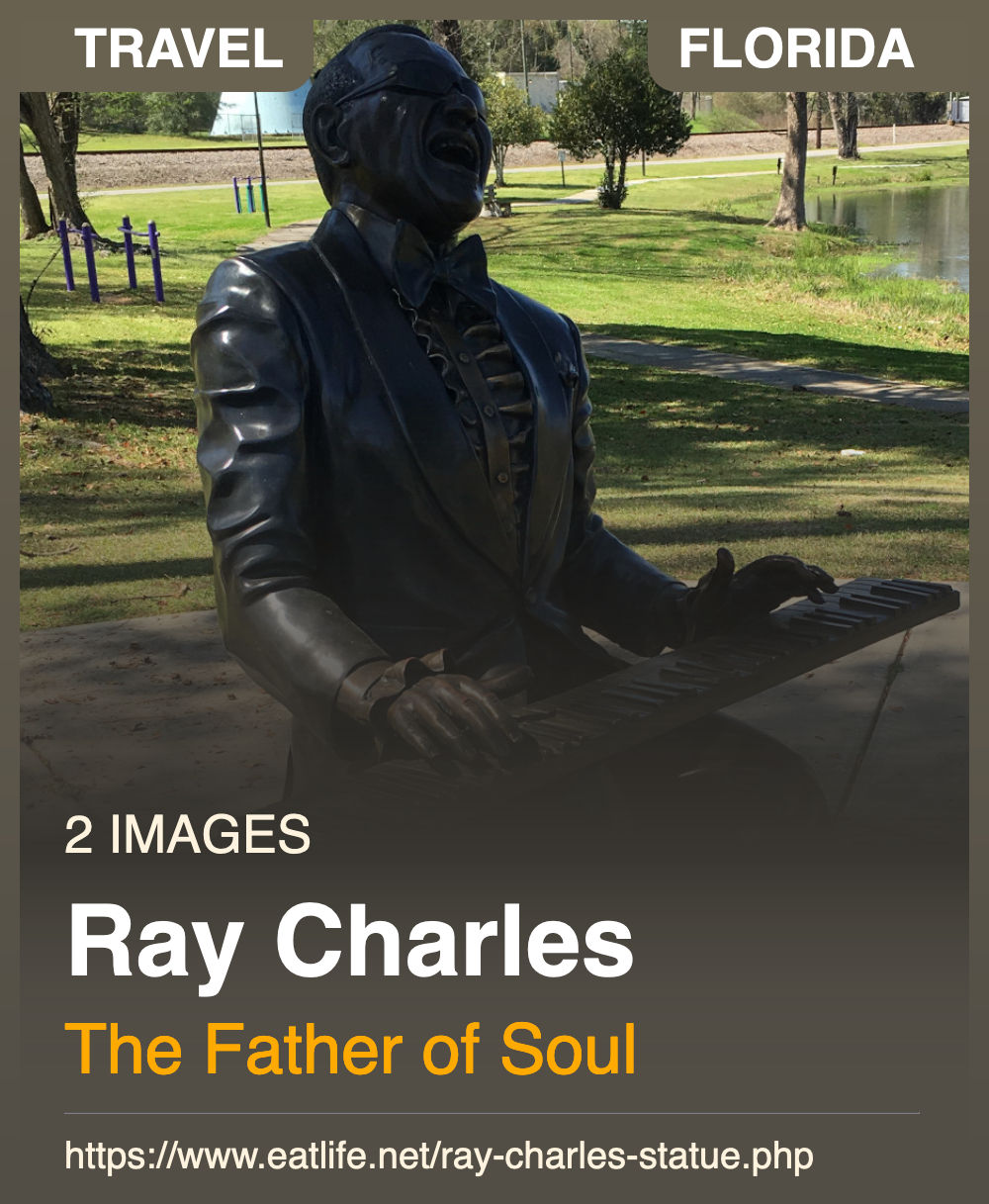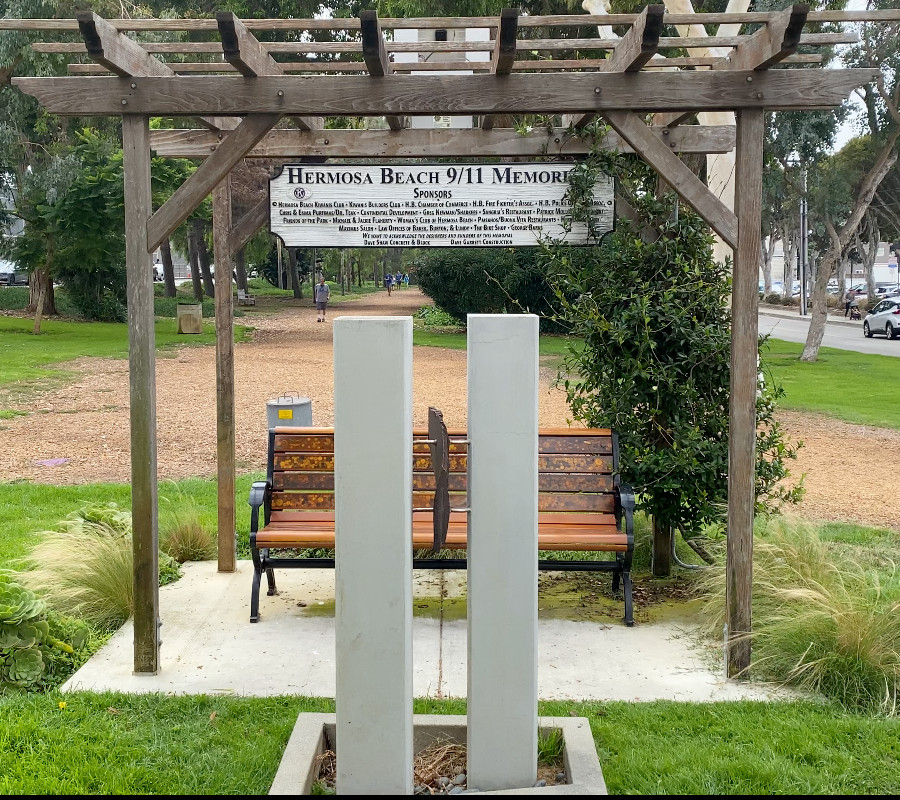Ray Charles
Most people traveling between Jacksonville and Pensacola will get on I-10 and, aside from maybe a brief stop in Tallahassee, they’ll make it a non-stop trip.But if you take Exit 241 and drive a short distance north on U.S. 221, you’ll be in the town of Greenville, Florida – the place where Ray Charles was raised.
Although he was born in Georgia, Charles had deep ties to Florida. He was raised in Greenville, educated in St. Augustine at the Florida School for the Deaf and Blind, and played at clubs around Orlando before heading across the nation to Seattle and fame.
It was Florida where he paid his dues. The folks in Greenville thought so, too, and put a wonderful statue of the local boy who made good in a prominent place.
https://www.visitflorida.com/travel-ideas/articles/ray-charles-hometown/
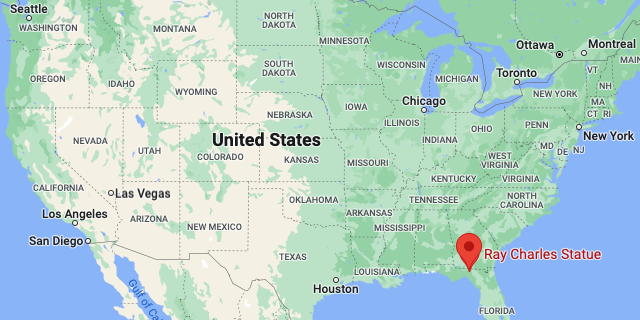
https://www.google.com/maps/place/Ray+Charles+Statue
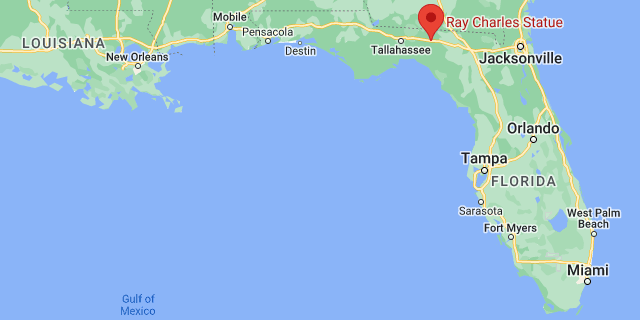
https://www.google.com/maps/place/Ray+Charles+Statue
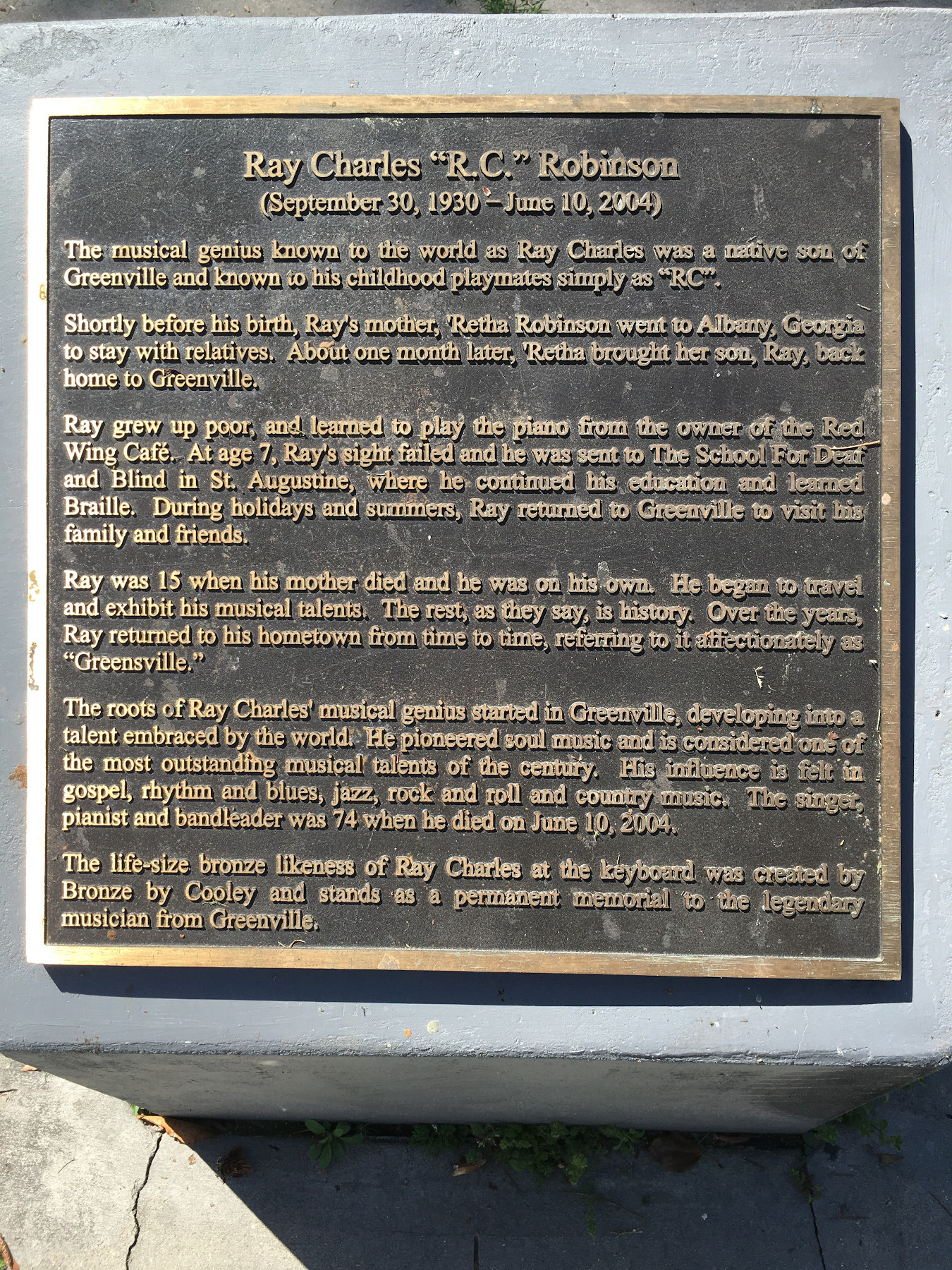
(September 30, 1930 - June 10, 2004) The musical genius known to the world as Ray Charles was a native son of Greenville and known to his childhood playmates simply as "RC".
Shorty before his birth, Ray's mother, Retha Robinson went to Albany, Georgia to stay with relatives. About one month later, Retha brought her son, Ray, back home to Greenville.
Ray grew up poor, and learned to play the piano from the owner of the Red Wing Cafe. At age 7, Ray's sight failed and he was sent to The School for Deaf and Blind in St. Augustine, where he continued his education and learned Braille. During holidays and summers, Ray returned to Greenville to visit his family and friends.
Rey was 15 when his mother died and he was on his own. He began to travel and exhibit his musical talents. The rest, as they say, is history. Over the years, Ray returned to his hometown from time to time, referring to it affectionately as "Greensville."
The roots of Ray Charles' musical genius started in Greenville, developing into a talent embraced by the world. He pioneered soul music and is conidered one of the most outstanding musical talents of the century. His influence is felt in gospel, rhythm and blues, jazz, rock and roll and country music. The singer pianist and bandleader was 74 when he died on June 10, 2004.
The life size bronze likeness of Ray Charles at the keyboard was created by
Bronze by Cooley and stands as a permanent, memorial to the legendary
musician from Greenville.
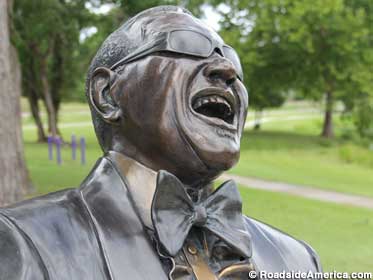
Greenville's Mayor Elesta Pritchett was born in 1930, only a few weeks ahead of Ray, lived only a couple houses away from his family, and eventually became the mayor of the town of Greenville.
"My momma said that his momma wasn't anything but a child when she was pregnant with him," said Elesta. "It was a scandal here in Greenville." Ray's father, who was also his half-uncle, had a sister who lived a hundred miles north in Albany, Georgia. She came to Greenville and took Ray's pregnant mother away.
A few weeks later Ray's mom returned with her new baby. "Maybe a month," said Elesta. "That's all the Georgia he had in him." (Elesta added that Ray Charles had no birth certificate, so he could have been born anywhere.)
Ray Charles's long history in Greenville is well-documented. "Everybody knew R.C.," said Elesta. She told us about the time Ray taught her poker with his braille playing cards. Once, she said, she came upon Ray walking along a dirt path, slapping away on his legs, lost in music that was only in his head. "He could go all over Greenville, all by himself." Ray lived in town until he was seven, and returned for frequent visits from his school for the blind in St. Augustine (also in Florida) until he was 15, when his mother died.
When Ray died in 2004, Mayor Pritchett knew she had to do something to make people aware of his childhood in Greenville. As a small town with limited resources, Greenville's prospects were grim. But Elesta was persistent, and Florida rallied to the cause. The state provided some money, and the sculpting team of Bradley Cooley and Brad Cooley Jr. in nearby Lamont offered to create a Ray Charles statue for free. It was unveiled in Greenville's park on February 18, 2006.
This is Ray Charles's home. Greenville. He walked these sand roads with no shoes on. The people here now, the younger generation, I wanted them to know.
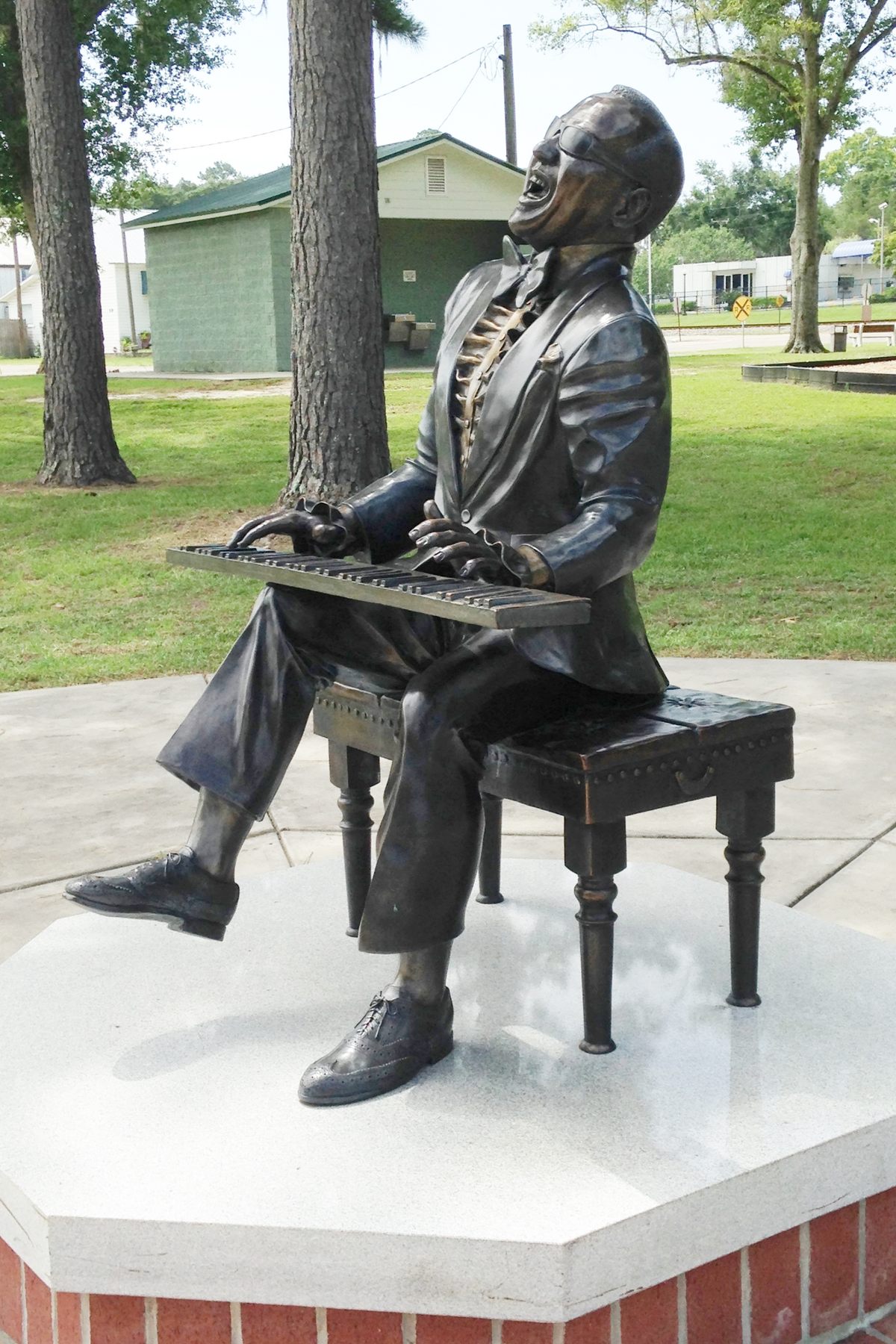
The tiny town of Greenville (population less than a thousand), in north Florida is where Ray’s mother Aretha was from. She had traveled to Albany, Georgia while pregnant with Ray, and it’s true that he was born there. But life in Albany was short-lived, and after only a month they returned to Greenville. “R.C.,” as he was known by childhood friends, grew up in a small house on what is now called Ray Charles Avenue. Greenville was R.C.’s home until age 7, when he was sent to The Florida School for the Deaf and Blind in St. Augustine. He made frequent visits back to Greenville, until Aretha’s death when he was only 15.
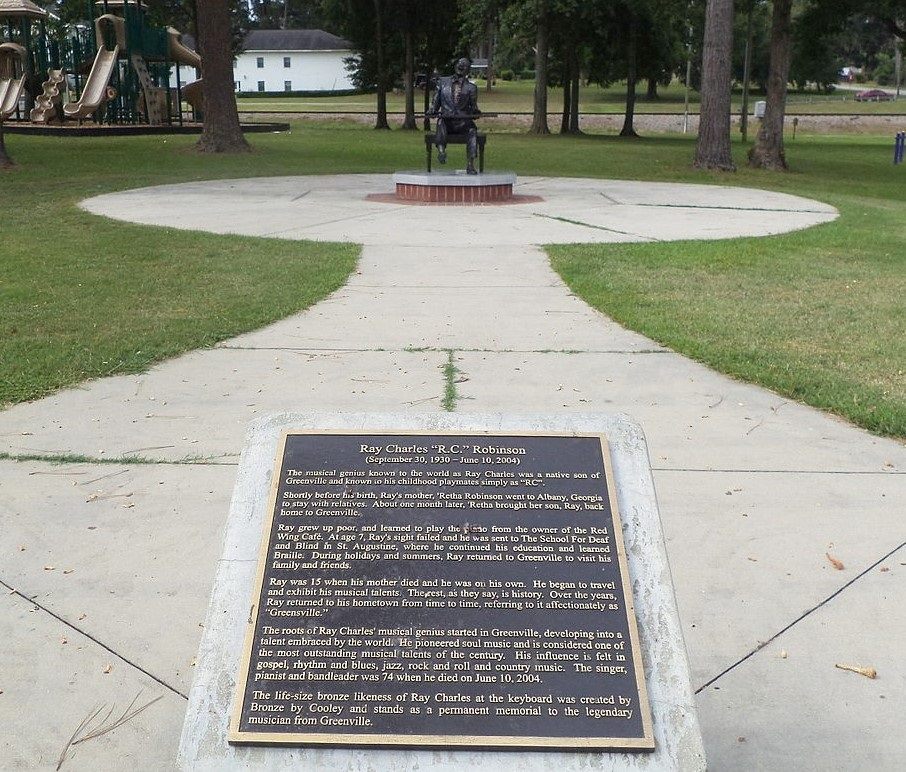
The Ray Charles memorial, unveiled in 2006 and consisting of a dedication plaque and bronze statue in a small plaza, sits alongside a pond in Haffye Hays Park in the center of town.
Just about half a mile from the memorial is Charles’ childhood home at 443 SW Ray Charles Avenue. Saved from demolition in 2006, the small house was opened as an attraction in 2009, and visitors can call City Hall for a tour of the inside. If you’re lucky your tour guide will be Elesta Pritchett, Mayor of Greenville and R.C.’s childhood friend.
https://www.atlasobscura.com/places/ray-charles-statue
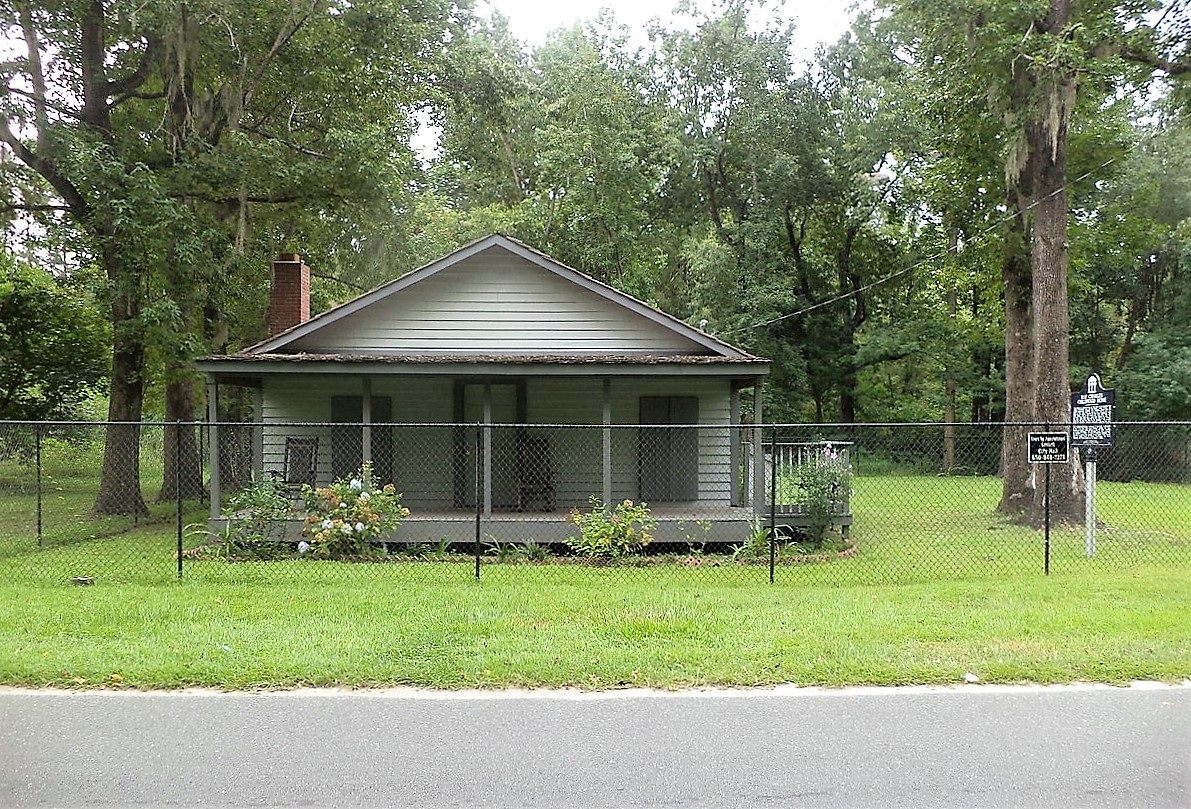
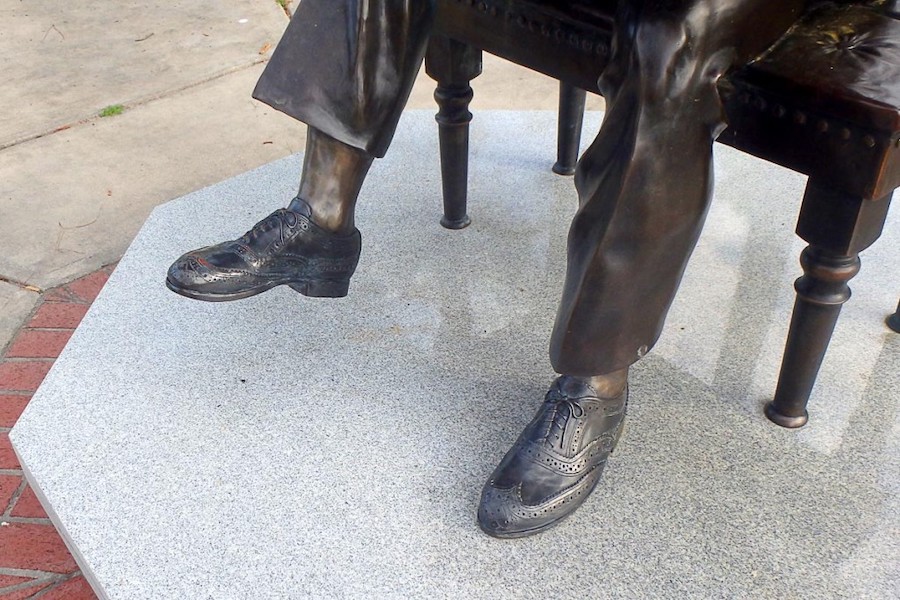
The last things Ray Charles ever saw before going blind were right here, in this town. He also learned to play piano here, from the proprietor of a general store. At that time (the mid 1930s), the roads were probably mostly unpaved, but the trees and air would have been the same. Train tracks go right through the town near the park.
Ray Charles Avenue:
The small grey house sits on a residential street, with occupied houses on either side and a forest across the street.
A historical plaque is in the front yard, but the property is fenced off.
A sign says to call city hall to arrange a tour, which I would have loved to do but it was already too late in the day.
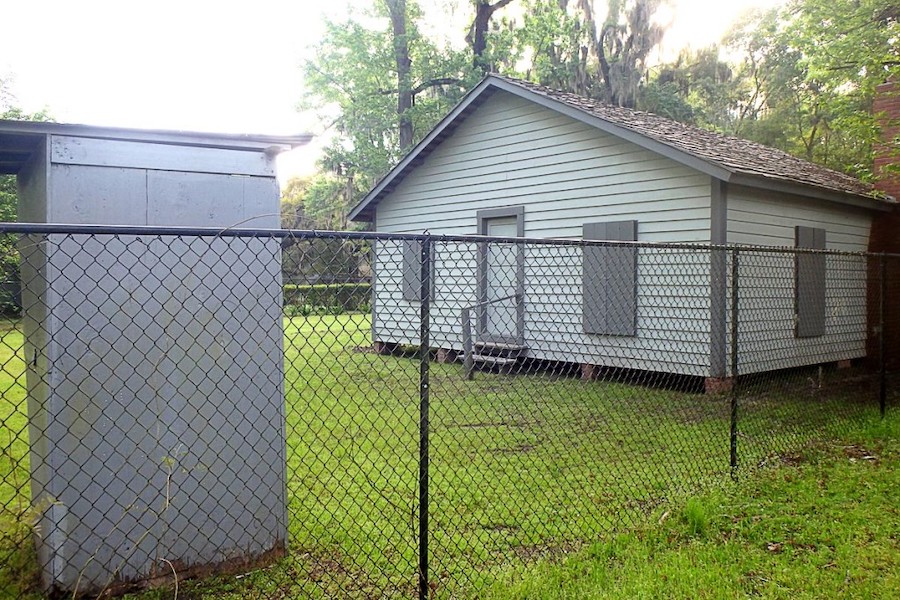
Here, Ray lived with his mother and little brother George — until he watched George drown in a tub in the yard shortly before losing his sight to glaucoma. Right here, in this yard and on this front porch, all this happened.

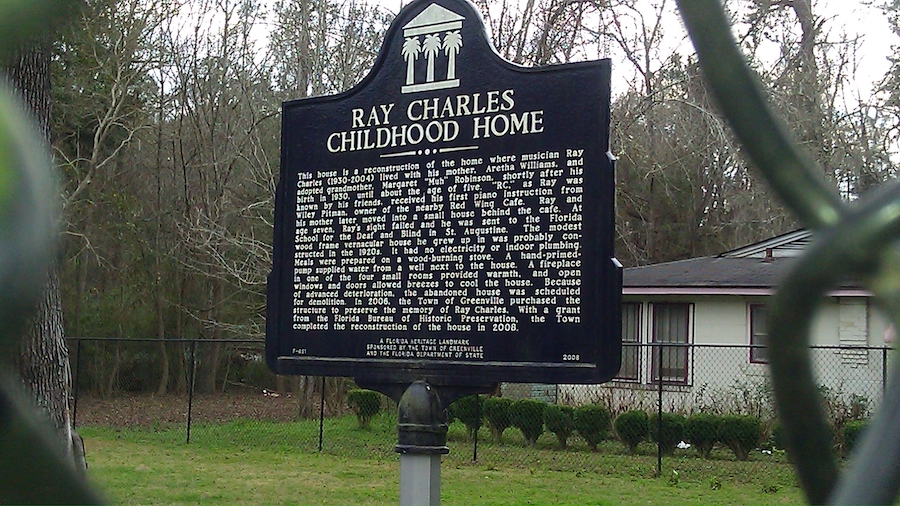
This home is a reconstruction of the home where musician Ray Charles (1930-2004) lived with his mother, Aretha Williams, and adopted grandmother, Margaret "Muh" Robinson, shortly after his birth in 1930, until about the age of five. "RC", as Ray was known by his friends, received his first piano instruction from Wiley Pitman, owner of the nearby Red Wing Cafe.
Ray and his mother later moved into a small house behind the cafe. At age seven, Ray's sight failed and he was sent to the Florida School for the Deaf and Blind in St. Augustine. The modest wood frame vernacular house he grew up in was probably constructed in the 1920s. It had no electricity or indoor plumbing. Meals were prepared on a wood-burning stove. A hand-primed-pump supplied water from a well next to the house. A fireplace in one of the four small rooms provided warmth, and open windows and doors allowed breezes to cool the house.
Because of advanced deterioration, the abandoned house was scheduled for demolition in 2006. The town of Greenville purchased the structure to preserve the memory of Ray Charles. With a grant from the Florida Bureau of Historic Preservation, the Town completed the reconstruction house in 2008.
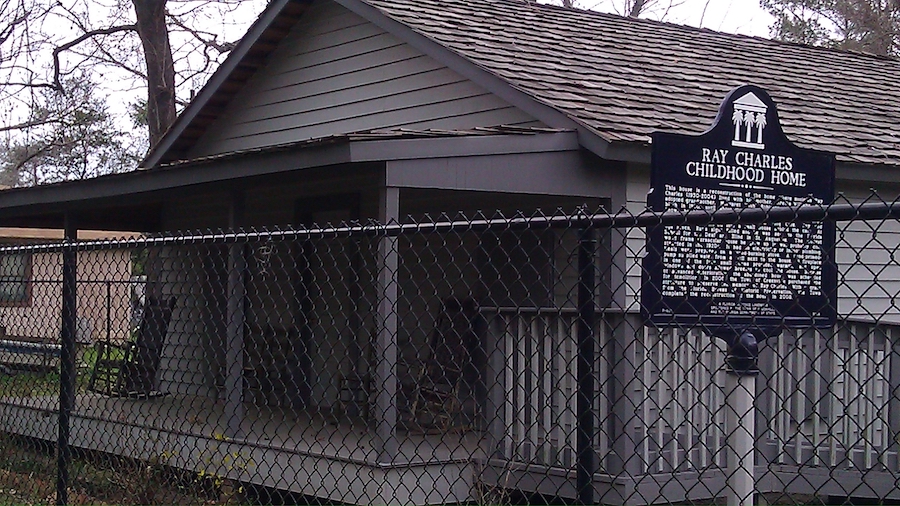
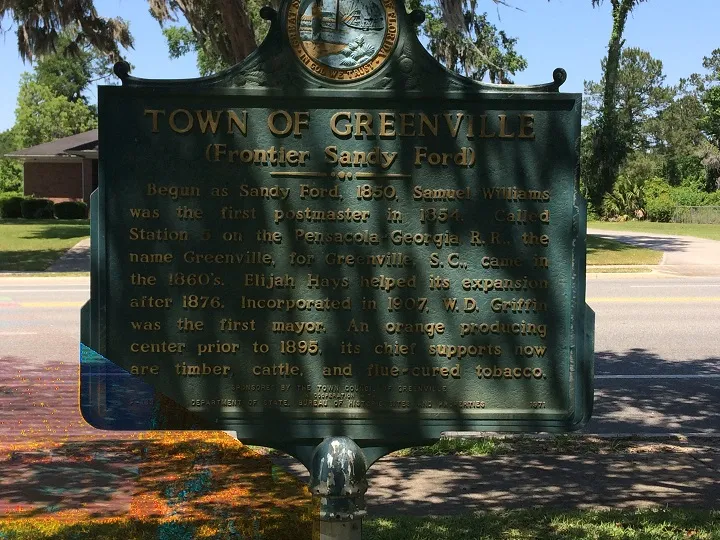
(Frontier Sandy Ford)
Begun as Sandy Ford, 1850, Samuel Williams was the first postmaster in 1854. Called Station 5 on the Pensacola-Georgia R.R., the name Greenville, for Greenville, S.C., came in the 1860’s. Elijah Hays helped its expansion after 1876. Incorporated in 1907, W.D. Griffin was the first mayor. An orange producing center prior to 1895, its chief supports now are timber, cattle, and flue-cured tobacco.
Greenville:The town was originally called Sandy Ford, but changed its name to honor Greenville, SC, the city from which many of the prominent early settlers came.
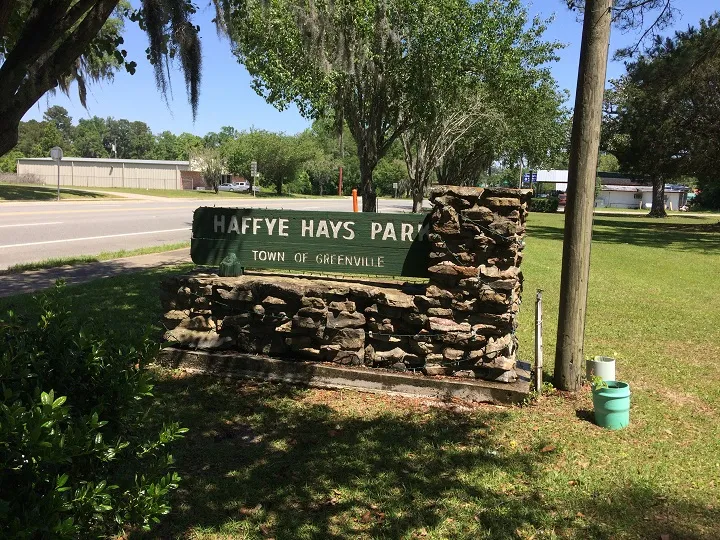
Haffye Hays Park:
Founded in 1980. We discovered that the park is named for Miss Haffye Hays. Her father, Elijah (E J) Hays, established the town as Greenville. Miss Hays died on October 14, 1962, unmarried at the age of 91. She is buried in Oak Ridge Cemetery in Madison County.
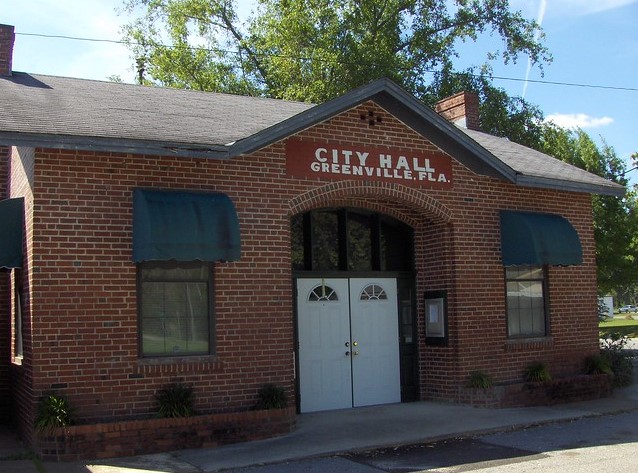
- 44 miles east of Tallahassee on US-90 and Interstate 10. It has a population of 826 in 2021. It is 14 miles west of Madison.
- Sandy Ford was the name given the community first established here in 1850.
- The name was changed to Station Five during the Civil War. This was in reference to its location as the fifth station east of the state capital, Tallahassee, on the Pensacola and Georgia Railroad.
- The railroad reached Station Five in 1858, a few years before the Civil War, and continued east to Lake City.
- During the Civil War the women of this community formed a sewing society and sewed uniforms and other cloth supplies for Confederate Soldiers.
- The first box of supplies mailed to the Confederate capital of Richmond was marked as coming from Station Five.
- The quartermaster of the Confederate Army wrote the women and said the packages in the future would have to be given in the name of a town.
- The women decided to name the town Greenville in honor of the hometown in South Carolina of the sewing society president, Mrs. U. M. Roberts.
- The Town of Greenville was incorporated in 1907.
Greenville is a typical small Florida country town with one big difference: it honors the memory of one of its own, the great Ray Charles.
Ray Charles Robinson:
- He was born in 1930 in Albany, Georgia. His mother, Aretha, was only 15 years old when he was born.
- After Ray's birth, she left Georgia with her son to be with her family in Greenville. Charles was deeply devoted to his mother.
- There was a restaurant in Greenville when Ray was a child known as Wylie Pitman's Red Wing Cafe. When Ray was three years old he heard Pitman playing boogie woogie on a piano and loved the music.
- Wylie Pitman taught Ray how to play the piano, and he and his mother spent a lot of time at the cafe.
- Ray began losing his sight when he was four or five years old, and by the age of seven he was completely blind. His mother searched for a school that would accept a blind black student.
- The school that accepted him was the Florida School for the Deaf and Blind in St. Augustine. Ray attended the school from 1937 to 1945.
- While at the school he learned how to play classical piano including the music of Mozart, Bach, and Beethoven.
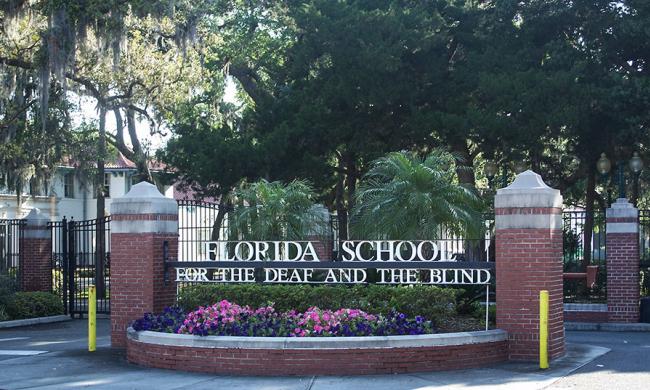
https://www.florida-backroads-travel.com/greenville-florida.html
 Ray Charles:
Ray Charles:He was the musician most responsible for developing soul music. Singers like Sam Cooke and Jackie Wilson also did a great deal to pioneer the form, but Charles did even more to devise a new form of Black pop by merging '50s R&B with gospel-powered vocals, adding plenty of flavor from contemporary jazz, blues, and (in the '60s) country. Then there was his singing; his style was among the most emotional and easily identifiable of any 20th century performer, up there with the likes of and Elvis and Billie Holiday. He was also a superb keyboard player, arranger, and bandleader. The brilliance of his 1950s and '60s work, however, can't obscure the fact that he made few classic tracks after the mid-'60s, though he recorded often and performed until the year before his death.
Blind since the age of six:
From glaucoma. Charles studied composition and learned many instruments at the St. Augustine School for the Deaf and the Blind.
His parents had died by his early teens, and he worked as a musician in Florida for a while before using his savings to move to Seattle in 1947.
By the late '40s, he was recording in a smooth pop/R&B style derivative of Nat "King" Cole and Charles Brown.
He got his first Top Ten R&B hit with "Baby, Let Me Hold Your Hand" in 1951.
Charles' first recordings came in for their fair share of criticism, as they were much milder and less original than the classics that would follow, although they're actually fairly enjoyable, showing strong hints of the skills that were to flower in a few years.
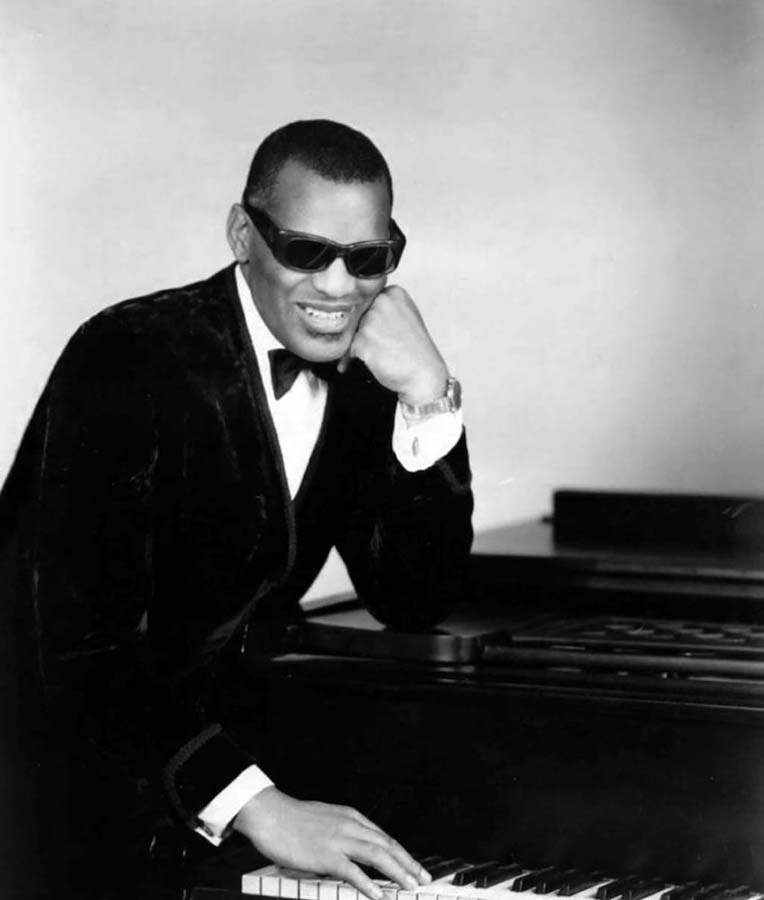
Ray Charles was a poor, blind, newly orphaned teenager living in Tampa, Florida, in 1948 when he decided to move to Seattle, picking the city because it was as far away as he could get from where he was. He stayed only two years, but during that time he cut his first record and began to develop the genre-bending musical style that would make him an international star. Charles often spoke of Seattle as a pivotal point in his long and hugely successful career as a singer/songwriter. "I met a lot of very good friends here," he told one interviewer. "I liked the atmosphere. The people were friendly, the people took to me right away. Seattle is the town where I made my first record. And if you ever want to say where I got my start, you have to say that"
Born in 1930:
Ray Charles Robinson was born September 23, 1930, in Albany, Georgia, the first child of Aretha and Bailey Robinson. His father worked off and on for the railroads; his mother took in laundry. The family started out poor and stayed that way throughout the hard years of the Depression. "Even compared to other blacks," Charles recalled, "we were on the bottom of the ladder looking up at everyone else. Nothing below us except the ground"
Greenville, Florida:
The family moved across the border to Greenville, Florida, when Charles was a few months old. A second child soon followed, a son named George.
Their father Bailey Robinson became little more than an occasional visitor after that. "The old man wasn’t part of my life," Charles wrote in his 1978 autobiography. "... to tell the truth, I wouldn’t bet a lot of money he and my mother ever were married. He was a tall dude -- I remember that. But he was hardly ever around"
Brother George Drowns:
When he was about five, Charles witnessed the drowning death of his younger brother.
The two boys had been in the backyard playing near a large metal tub their mother used for washing clothes when four-year-old George slipped over the edge and into the soapy water.
Charles tried to pull him out, but his brother - quickly weighted down by his wet clothing - was too heavy.
Charles ran indoors, screaming for his mother, but it was too late.
It was the first major tragedy in a life that would have many other sorrows.
Blindness:
Not long after the drowning, Charles began to lose his vision, apparently as the result of untreated glaucoma.
He was completely blind by the time he was seven.
He credited his mother with preparing him to live without sight.
She made him continue to draw water from the well, bring in the firewood, and do other chores, even though he often tripped and fell.
You may be blind, she told him, but you’re not stupid; you have to do things for yourself, no one else will do them for you.
"She let me roam, let me make my own mistakes, let me discover the world for myself," he wrote. From this he developed a fierce independence and the ability to maneuver so adroitly that some people, later in his life, doubted that he was really blind.
His mother managed to get him accepted as a charity student at the Florida State School for the Deaf and the Blind (known at the time as the Institute for the Blind, Deaf and Dumb), in St. Augustine, about 130 miles southeast of Greenville. He stayed there for eight years, with time off for summers at home. He learned how to read Braille, to type, to weave baskets, and to repair radios and cars. He also studied music formally for the first time, mastering the piano and other instruments, including clarinet and saxophone. He learned to read and compose music in Braille. He played everything, from Chopin to jazz pianist Art Tatum. On the radio he listened to swing, country-western, and gospel.
Charles’ mother died shortly before his 15th birthday:
It was, he wrote later, the most devastating experience of his life. He felt like "truly a lost child." He left school and moved to nearby Jacksonville, where he stayed for a while with one of his mother’s friends. He began trying to make a living as a musician, working as a sideman in small combos.
"Work was very sparse," he wrote. "I might work a couple of nights and then no more for two weeks or three weeks - whenever something came along. Hit and miss, really, that's what it was"
Tampa:
Eventually, he moved on to Tampa. But he found it difficult to survive as a musician in Florida. He also resented working for other people. He wanted to form his own group, and make a fresh start in a new place.
Too intimidated to try New York or Chicago, he asked a friend - guitarist Garcia "Gosady" McGee - what city in the continental United States was farthest from Florida.
McGee "took a map and went diagonal across it, and there was Seattle sittin’ up in the Northwest, and I said let me go there and see what I can do"
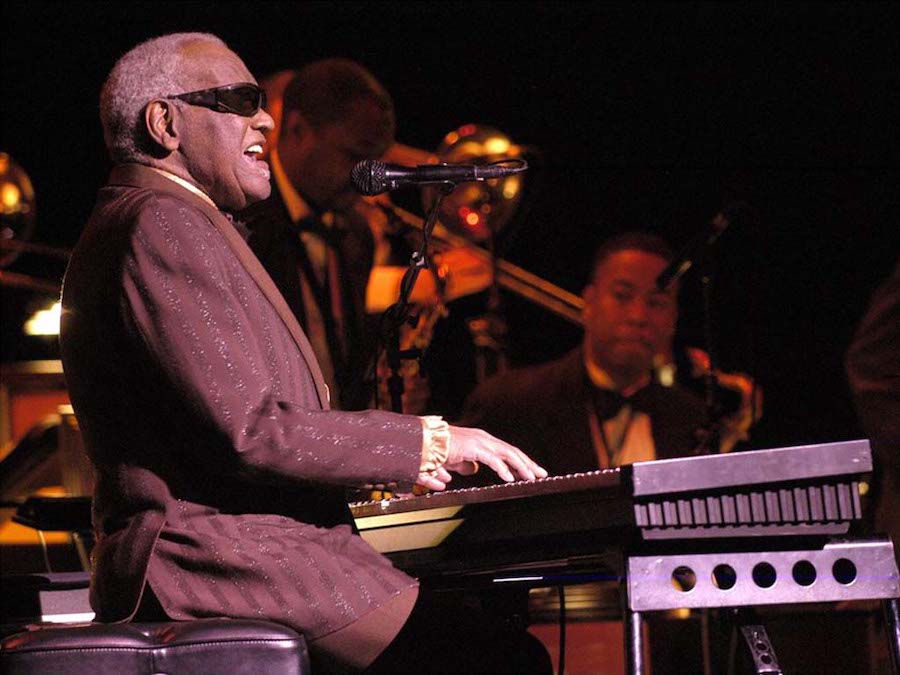
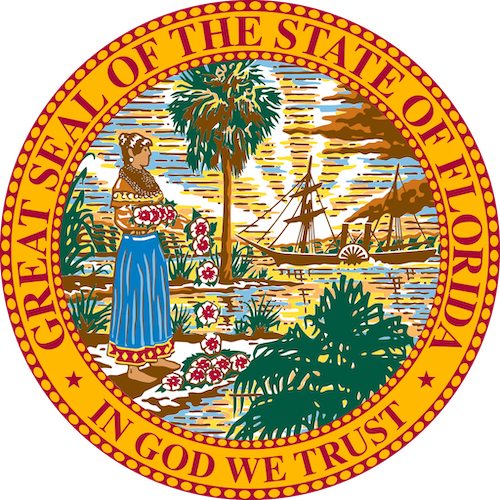 1937 Saint Augustine:
1937 Saint Augustine:After his family moved to Greenville, Florida (near Tallahassee) Charles was soon enrolled at a state-supported school for the deaf and blind in St. Augustine, Florida, in 1937. During his eight years there, Charles received a formal music education, mastered Braille and learned to play piano, organ, clarinet, trumpet and saxophone. On summer breaks, he occasionally entertained relatives in Tallahassee's black district, known as Frenchtown.
1945 Chitlin Circuit:
At 15, he left school to join the South's so-called "chitlin' circuit, performing at gigs throughout the south, mostly in black dance halls in Orlando, Tampa, and Jacksonville, where he lived briefly.
In Tampa, he played for a southern band called The Florida Playboys, wearing his signature sunglasses for the first time. It was in Tampa that he made his first three recordings.
1948 Seattle:
In 1948, Charles left Florida for Seattle, Washington, to pursue better opportunities in music. There he met 14-year-old Quincy Jones, and the two developed what would become a close personal and professional relationship for the rest of Charles' life.
Sugar Ray Robinson:Charles dropped his last name "Robinson," mainly to avoid popular confusion, since boxer Sugar Ray Robinson had become a household name in the U.S.
1950s Atlantic Records:
A decade of phenomenal success for Charles. First signed to Atlantic Records, he scored his first No. 1 hit with "I Got a Woman," a song that combined elements of gospel music with blues.
The wildly popular recording spawned a new musical genre that eventually would become known as soul music.
Charles ended the decade on a high note with the single "What'd I Say." The song topped the R&B chart in 1959 and was Charles' first cross-over hit.
1960s a string of smash hits:
Many of which not only became Charles' all-time signature songs, but also were unprecedented blends of soul, blues, jazz and country western sounds.
Such hits as "Georgia on My Mind," "Hit the Road Jack," "You Don't Know Me," and "Crying Time," ably demonstrated Charles' extraordinary grasp of the full range of American pop music.
2004 Liver Cancer:
Ray Charles had conquered not only the music world, but also a 20-year addiction to drugs.
His legacy—underscored by a dozen Grammy Awards, three Emmy nominations, inductions into the Rock, Jazz and Rhythm and Blues halls of fame, among a long list of other honors—is generally regarded as an essential and indelible element in the bedrock of American pop music.
https://dos.myflorida.com/cultural/programs/florida-artists-hall-of-fame/ray-charles/
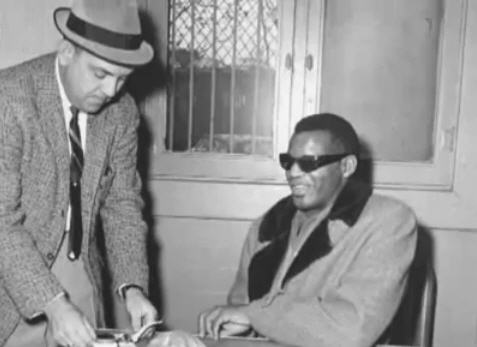
On November 14, 1961, Charles was arrested on a narcotics charge in an Indiana hotel room. The detectives seized heroin, marijuana, and other items. Charles, then 31 years old, stated that he had been a drug addict since the age of 16. The case was dismissed because the evidence was obtained in an illegal way. By 1964 he was arrested again for possession of marijuana and heroin. Following a self-imposed stay at St. Francis Hospital in Lynwood, California, where he kicked his drug habit "in 96 hours" (the total treatment took 3 to 4 months, though), Charles received five years probation.
I'm Black, I'm blind, I once fooled around with drugs, but all of it was like going to school - and I've tried to be a good student. I don't regret a damn thing.
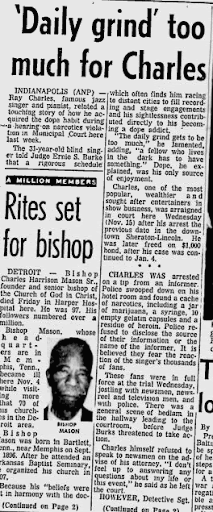
http://raycharlesvideomuseum.blogspot.com/2010/06/ray-charles-1st-time-arrested-for-drugs.html
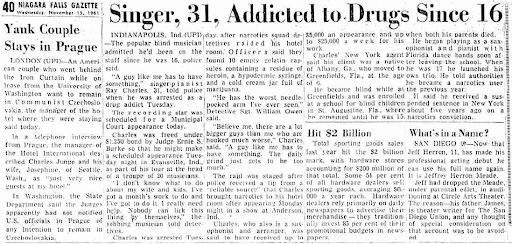
 Key Songs:
Key Songs:The “Genius of Soul” is nearly unsurpassed in his contribution to American music. In over fifty years of writing, performing, and recording, Ray Charles left his indelible mark on rhythm and blues, jazz, soul, rock & roll, and even country.
Confession Blues:
Recorded in 1949, shortly after Ray Charles relocated to Seattle (where he famously met songwriter Robert Blackwell and a young Quincy Jones), "Confession Blues" was released on the short-lived Down Beat Records label as The Maxin Trio (actually, The McSon Trio, the label misnamed it). The song emulated the style of Nat King Cole (who Charles modeled himself after early on) and reached #2 on the R&B charts, his first national hit.
Confession Blues:
I wanna tell you a story,
Of a boy who was once in love,
I wanna tell you a story,
Of a boy who was once in love,
And how the girl that I loved,
Taught me of the happiness I dreamed of,
She called me fine, sweet and mellow,
But that didn't mean a thing,
She called me fine, sweet and mellow,
But that didn't mean a thing,
Because I knew when she whispered love,
That meant a watch, bracelet and a diamond ring,
Guitar solo Piano solo
I didn't mind my baby's warts, If she'd only played fair with me, I didn't mind my baby's warts, If she played fair with me, She took advantage of my goodness, And made a pitiful fool out of me, Baby .. go ahead go ahead.
I Got A Woman:
Ray Charles' first chart topper, and one of his best known songs, co-written with trumpeter Renald Richard while on the road in 1954. "I Got A Woman" reached #1 on the R&B chart after its release in 1955 on Atlantic Records. The song bridged together gospel, jazz and R&B into what would become Charles' signature sound, later dubbed "soul music."
What I'd Say:
Following a simiar sonic recipe as "I Got A Woman," Charles finally cracked the Billboard Top 10 with "What I'd Say" (Atlantic Records), as "soul music" entered the mainstream. At the time of its release, the song's sexual innuendos were quite controversial, but nevertheless immensely popular. It became Charles' first gold record, and his go-to closer for live shows.
Georgia On My Mind:
Following the success of "What I'd Say," Ray Charles decided not to resign with Atlantic Records, opting for a lucrative deal with ABC-Paramount.
Jazz fans may remember his 1960 Quincy Jones-collaboration Genius + Soul = Jazz (released on ABC's subsidiary label Impulse!), but it was his signature interpretation of "Georgia on My Mind" that received popular acclaim and four GRAMMY Awards.
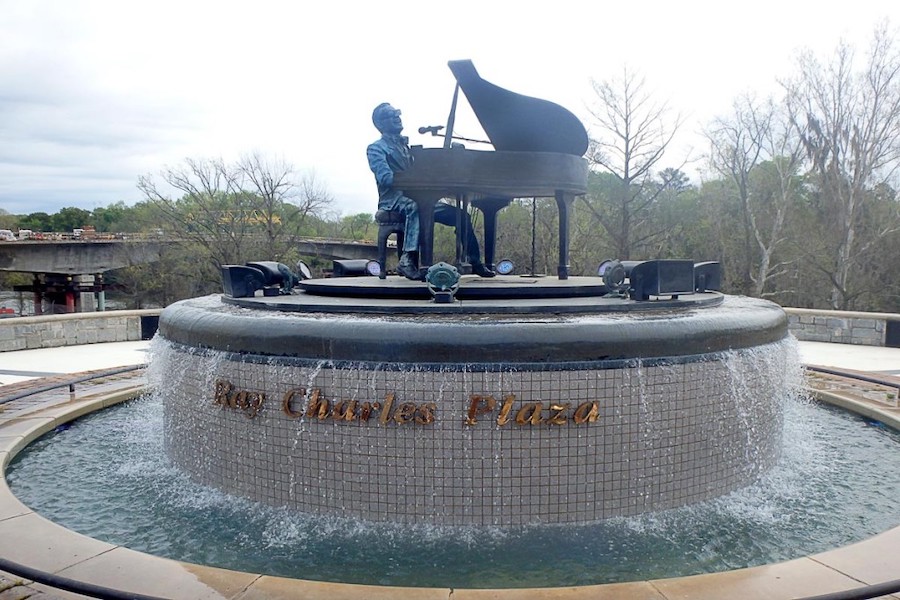
Despite the continuous sound of the water in the fountain, there’s another sound that dominates the little park by the river: Ray’s music, coming from speakers placed around the area and on a loop.
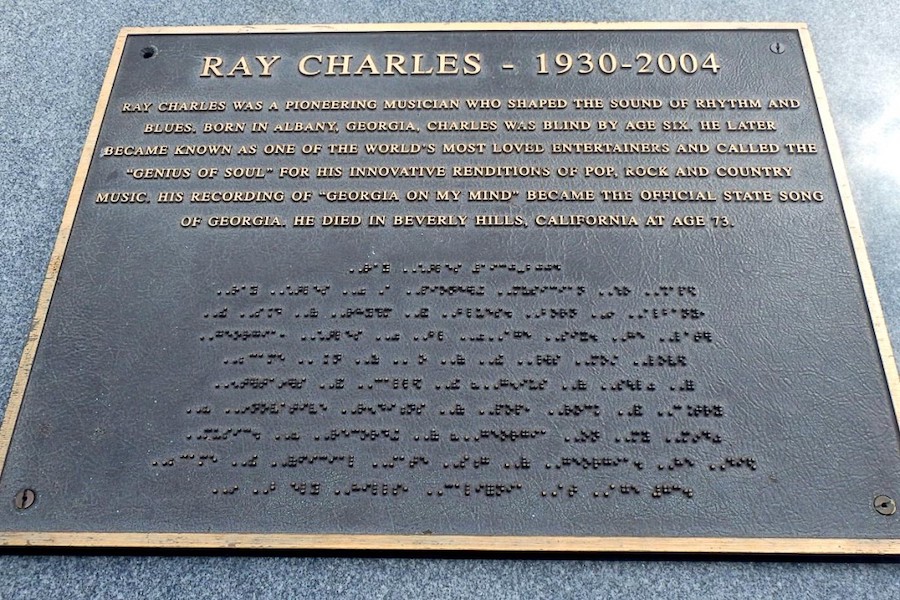
RAY CHARLES - 1930-2004
Ray Charles was a pioneering musician who shaped the sound of rhythm and blues. Born in Albany, Georgia, Charles was blind by age six.
He later became known as one of the world's most love entertainers and called the "genius of soul" for his innovative renditions of pop, rock, and country music.
His recording of "Georgia on My Mind" became the official state song of Georgia. He died in Beverly Hills, California at the age of 73.

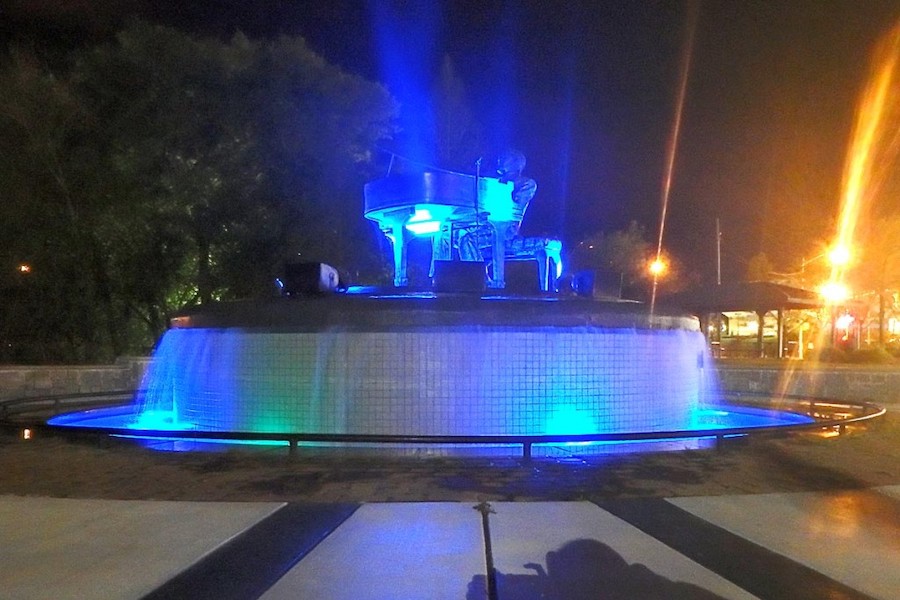
Ray Charles Robinson was an American singer, songwriter, pianist, and composer. He is regarded as one of the most iconic and influential singers ever, and he was often referred to as “The Genius”.Ray Charles:
- Among friends and fellow musicians he preferred being called "Brother Ray".
- Charles was blinded during childhood, possibly due to glaucoma.
- Charles pioneered the soul music genre during the 1950s by combining blues, jazz, rhythm and blues, and gospel styles into the music he recorded for Atlantic.
- He contributed to the integration of country music, rhythm and blues, and pop music during the 1960s with his crossover success on ABC Records,
- While he was with ABC, Charles became one of the first black musicians to be granted artistic control by a mainstream record company.
- Charles's 1960 hit "Georgia On My Mind" was the first of his three career No. 1 hits on the Billboard Hot 100.
- His 1962 album Modern Sounds In Country And Western Music became his first album to top the Billboard 200.
- Charles had multiple singles reach the Top 40 on various Billboard charts: 44 on the US R&B singles chart, 11 on the Hot 100 singles chart, 2 on the Hot Country singles charts.
- Charles cited Nat King Cole as a primary influence, but his music was also influenced by Louis Jordan and Charles Brown.
- He had a lifelong friendship and occasional partnership with Quincy Jones.
- Frank Sinatra called Ray Charles "the only true genius in show business," although Charles downplayed this notion.
- Billy Joel said, "This may sound like sacrilege, but I think Ray Charles was more important than Elvis Presley".
He was one of the inaugural inductees at the Rock and Roll Hall of Fame, in 1986.The Robinson Family:
Ray Charles Robinson was the son of Bailey Robinson, a laborer, and Aretha (or Reatha) Robinson (nee Williams), a laundress, of Greenville, Florida.During Aretha's childhood, her mother died. Her father could not keep her. Bailey, a man her father worked with, took her in. The Robinson family — Bailey, his wife Mary Jane and his mother — informally adopted her and Aretha took the surname Robinson. A few years later 15-year-old Aretha became pregnant by Bailey. During the ensuing scandal, she left Greenville late in the summer of 1930 to be with family in Albany, Georgia. After the birth of Ray Charles, she and her baby returned to Greenville. Aretha and Bailey's wife, who had lost a son, then shared in Charles's upbringing. His father abandoned the family, left Greenville, and married another woman elsewhere. By his first birthday Charles had a brother, George. In later years, no one could remember who George's father was.
His musical curiosity was sparked at Wylie Pitman's Red Wing Cafe, at the age of three, when Pitman played boogie woogie on an old upright piano; Pitman subsequently taught Charles how to play the piano. Charles and his mother were always welcome at the Red Wing Cafe and even lived there when they were in financial distress. Pitman would also care for Ray's younger brother George, to take some of the burden off their mother. George accidentally drowned in his mother's laundry tub when he was four years old.
Charles started to lose his sight at the age of four[4] or five,[18] and was blind by the age of seven, likely as a result of glaucoma. Destitute, uneducated, and mourning the loss of her younger son, Aretha Robinson used her connections in the local community to find a school that would accept a blind African-American pupil. Despite his initial protest, Charles attended school at the Florida School for the Deaf and the Blind in St. Augustine from 1937 to 1945.
Charles further developed his musical talent at school and was taught to play the classical piano music of J.S. Bach, Mozart and Beethoven.
His teacher, Mrs. Lawrence, taught him how to use braille music, a difficult process that requires learning the left hand movements by reading braille with the right hand and learning the right hand movements by reading braille with the left hand, and then combining the two parts.Ray Charles's mother died in the spring of 1945, when he was 14. Her death came as a shock to him; he later said the deaths of his brother and mother were "the two great tragedies" of his life. Charles decided not to return to school after the funeral.
Charles was married twice. His first marriage was less than a year, his second 22 years. Throughout his life Charles had many relationships with women with whom he fathered a dozen children.
